- Joined
- 1 April 2006
- Messages
- 11,406
- Reaction score
- 10,384
WAT?Iskandars (downgraded ground launched versions of Kinzals)
WAT?Iskandars (downgraded ground launched versions of Kinzals)
However, what is an undeniable fact and which you need to ask yourself, is if Eastern weapons are so good and can take out all these systems with such ease, then why did Russia fail to attain air superiority over Ukraine in 2022?
A country with only a token Air Force and nowhere near as capable as even the weakest Western nation?
Ukraine did not have much of anything back in 2022 and even so the VVS failed to make any headway at all.
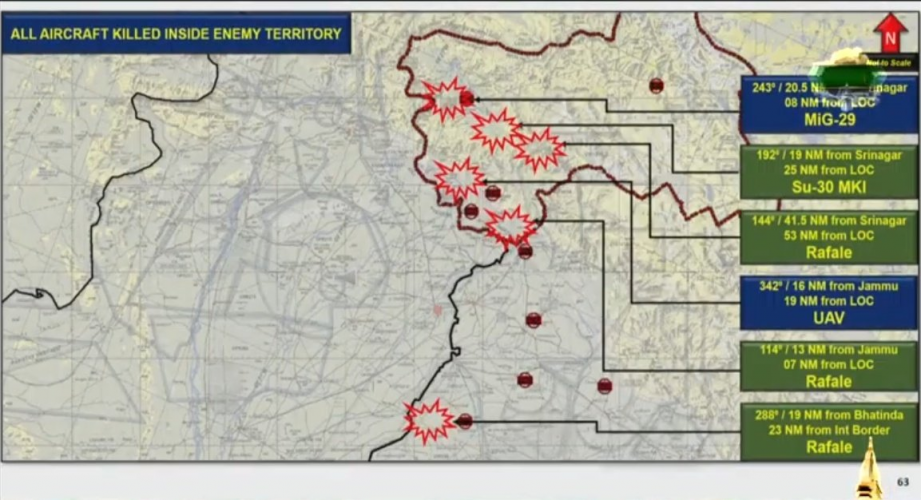
WAT?
Pakistan shares locations of where they claim they shot the Indian jets
View attachment 769317
View: https://x.com/clashreport/status/1920866581522858474/photo/1
Lots of drone footage out there of Patriots being hit by Iskander-M and Tornado-S.For example, the Kinzhal used to be touted as a “hypersonic and impossible to intercept” missile until Patriots started shooting it down.
For days, I've been wanting to say: No one is discussing how the largest deployment of modern fighters( gen4, gen4.5, call it whatever you want) in a single operation unfolds in BVR combat today, while others are stuck debating why a certain missile wasn't used or why a specific RWR failed to activate.PAF reconstruction. Apparently they have intercepted communication recording of a Rafale pilot with call sign Godzilla too…
PAF reconstruction. Apparently they have intercepted communication recording of a Rafale pilot with call sign Godzilla too…
View attachment 769318
View attachment 769319
Naa you're right that's why I said that they were claims. Also the place where PAF is claiming to have shot down a MiG seems to be the spot where the Mirage was shot downSo where is the evidence of these shoot downs? Rafale confirmed, Mirage 2000 confirmed, that’s about it. There is some wreckage people claim is showing SU-30 wreckage saying it shows that vertical stabilizers are visible but those are definitely not SU-30 vertical stabilizers. Looks more likely to be a drone, there is also a picture of an ejection seat that could be from either a MiG-29 or a Sukhoi but there is zero wreckage or even proof it’s a recent photos. Could be from an old crash or a AI generated image, not enough evidence so far. Too many dubious claims just like in 2019 when Pakistan claimed downing an SU-30s and India claimed downing an F-16.
So far I seen evidence of two maned aircraft. No one should just believe Pakistan just like no one should believe India claiming they shot down 2 JF-17s and 1 or 2 or 3 F-16s or a few AWACs, both side lie a lot. Photo evidence is all that matters.
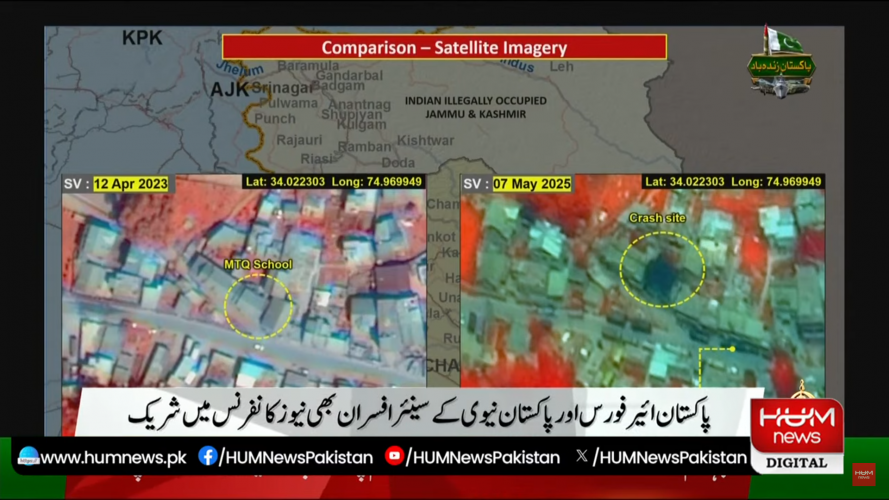
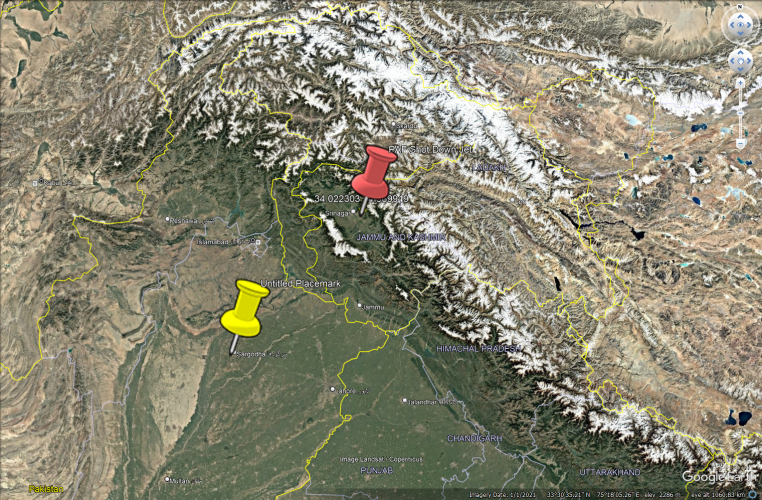
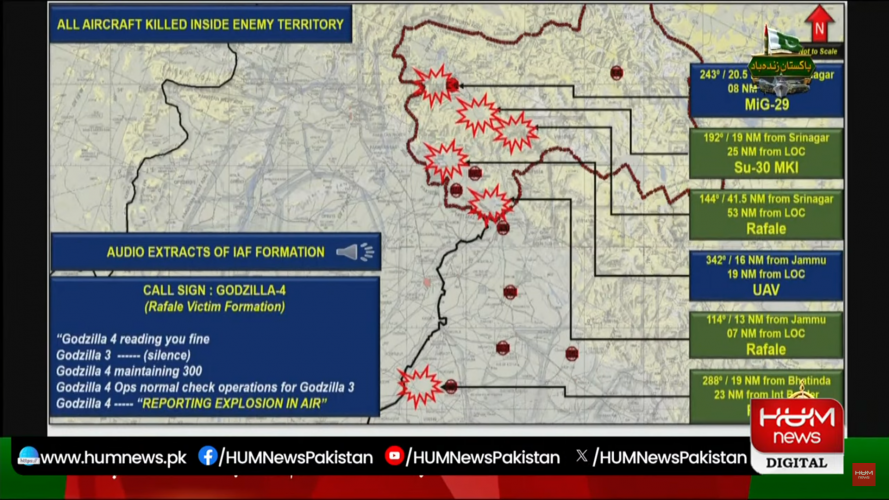
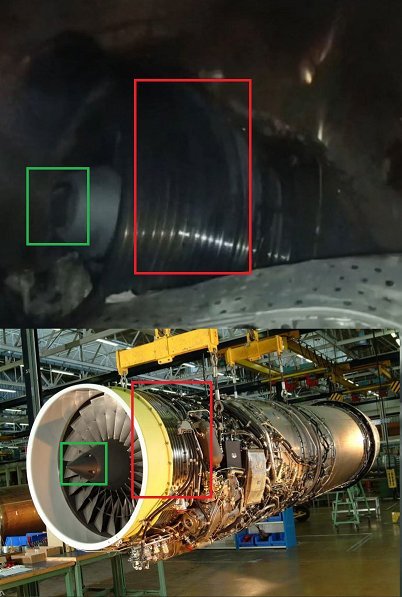
The only interest left in this thread by this point, is it helps refining my IGNORED members list. It is growing fast...
GaAS radar. But the performance of individual platform may not matter as how well they were integrated. There is no official confirmation on the designation for J-10C’s radar, let alone if it is GaN. But they have started producing GaN radars for fifth gen assets.I'm bit confused about the RBE-2AA, specifically the variant India has, does it use GaA or GaN modules? Most of the info i can gather indicate the J-10C has a GaN radar, and this is common for all the modern chinese fighters, both 4 and 5th gens, from the middle or late in the previous decade. Recall the much fanfare about various western fighters that only now about to receive GaN radars and claims of them being the first in the world to be so equipped, when clearly China is way ahead in that particular domain. Like i said with other occasions, it matters being a rare earths superpower.
So this might be a relatively simple technical explanation of the losses IAF looks to have suffered at the hands of the J-10C, it simply might have a better radar than Rafale (or at least the version India has), not to mention other IAF fighters, plus a very modern AESA seeker missile as well in the PL-15.
The question no one is asking is, why was India deploying strike aircraft from airfields in range of known Pakistani air defenses, when the cruise missiles could be launched far beyond those ranges?
Might be that they used them on purpose just to say that they used them. The Rafale deal was very heavily criticized as the billionaire owner of the Reliance Group which brokered the deal for India is said to have taken kickbacks from the French and inflated the final unit cost of the aircraft.Perhaps man-in-the-loop targeting was considered essential? They did reportedly use AASM (laser guidanced?).
GAaS infact we know the peak power is 9.6kw.I'm bit confused about the RBE-2AA, specifically the variant India has, does it use GaA or GaN modules? Most of the info i can gather indicate the J-10C has a GaN radar, and this is common for all the modern chinese fighters, both 4 and 5th gens, from the middle or late in the previous decade. Recall the much fanfare about various western fighters that only now about to receive GaN radars and claims of them being the first in the world to be so equipped, when clearly China is way ahead in that particular domain. Like i said with other occasions, it matters being a rare earths superpower.
So this might be a relatively simple technical explanation of the losses IAF looks to have suffered at the hands of the J-10C, it simply might have a better radar than Rafale (or at least the version India has), not to mention other IAF fighters, plus a very modern AESA seeker missile as well in the PL-15.

@sf7pakistan : I noticed how the Air Marshal in that press conference was pretty professional and, amazingly, compassionate. Sadly many journalists, excluding the Chinese one and the one from the FT, weren´t up to the task to ask pertinent questions to a military college ; while it was indeed a point in time that will remain in press history.
Regarding the tech PAF used, as unveiled in that interview, one can only blame Dassault to have only very reluctantly set a secure satellite datalink and full AESA architecture (something that will come only with the F4.2, if my mem stands right). It´s pretty obvious now that the Pakistani took the opportunity to inflict a damaging loss (politically for India) targeting those known Rafale weaknesses*.
Whatever will be the final tally for that operation, it´s already a pretty somber day for Dassault, IMOHO akin only to that M2kN tragic loss from a Sa-7 in ex-Yugoslavia.
Regarding the M2k loss in India, we haven´t seen anything conclusive. A smashed drop tank is not a proof of a crash. We can only hope that real investigative reporters are there, on the ground, trying to sort this out.
*How many times did I myself raise those points in the past years?!
What would be an example of pertinent question to ask? One of the reporters asked in the QA session after the presentation for details on JF-17, J-10, and PL-15 employment, and he was rebuffed with total nonanswers that amounted to "its too academic/the technicalities would bore you/the details are pointless to talk about/our airplanes participated, refer to the powerpoint."@sf7pakistan : I noticed how the Air Marshal in that press conference was pretty professional and, amazingly, compassionate. Sadly many journalists, excluding the Chinese one and the one from the FT, weren´t up to the task to ask pertinent questions to a military college ; while it was indeed a point in time that will remain in press history.
The J-10C v Rafale shoot down is the only one we actually know happened. We know there were at least two air-to-air kills by J-10Cs but we don't know who the second one was.
True. But advanced fighter jets with only 3-5 years on the ODO meter don't just coincidentally crash the very first time they are put into combat...How exactly do we know it happened? The only thing that can be established with some degree of confidence is that a Rafale went down the night of the strike. How it went down cannot be verified with a high degree of confidence.
True. But advanced fighter jets with only 3-5 years on the ODO meter don't just coincidentally crash the very first time they are put into combat...
The journalists also briefly speculate on the readiness of the electronic suite of the Rafale to even recognize modern Chinese AA missiles' signatures and the effectiveness of its countermeasures against those. Hard to tell just how much is known about the export versions of the missiles or how much meaningful variance can even be introduced in their seekers to confound a defensive system to such a degree that it wouldn't recognize it as at least some kind of a threat.
We have multiple independent accounts from multiple countries including the US claiming (with high confidence) that the Rafale was shot down by a J-10C. Knowing the US capabilities, I am very confident on this particular claim.How exactly do we know it happened? The only thing that can be established with some degree of confidence is that a Rafale went down the night of the strike. How it went down cannot be verified with a high degree of confidence.
It's AESA seeker(now for sure). Apply both the faster scan and all the usual LPI caveats.Well even if the IAF Rafale's threat library did not include the missile that downed it, I would still be very surprised if it did not anyway contain code that would identify an emitter with "hostile intent" like an active radar missile as an imminent threat.
Seriously folks, we don't even know if this was even shot down by an air to air weapon. Could have been a SAM..Could have been something completely unrelated.
However, as the saying goes, the closer you get to the target, the heavier the Flak will be. And judging by the amount of Flak I’m currently receiving in this thread, the observation that Russian military technology and tactics are flawed and outdated seems to be very much on point indeed.
And this is why a downing of an IAF Rafale is a Pyrrhic victory at best: Sure, it may add to the PAF’s scoreboard short term, but how will their Russian/Chinese equipment hold up in the long run given what we have recently learned from the conflict in the Ukraine? Ponder that now…..
There seems to be a lot of consternation over a relatively modern fighter aircraft that might have been shot down by another relatively modern fighter aircraft in a combat environment with large forces on both sides pushed fairly close together without the benefit of weeks of specific operational prep (a la many western air operations over the past 30 years), and it's perplexing.
Rafale's good, but it's not likely to be a permanent winner against all comers. Maybe Chinese missiles are the best in the world by a country mile. More likely they're not, though. But any way you cut it, they're definitely dangerous. I don't see what all the drama is about.
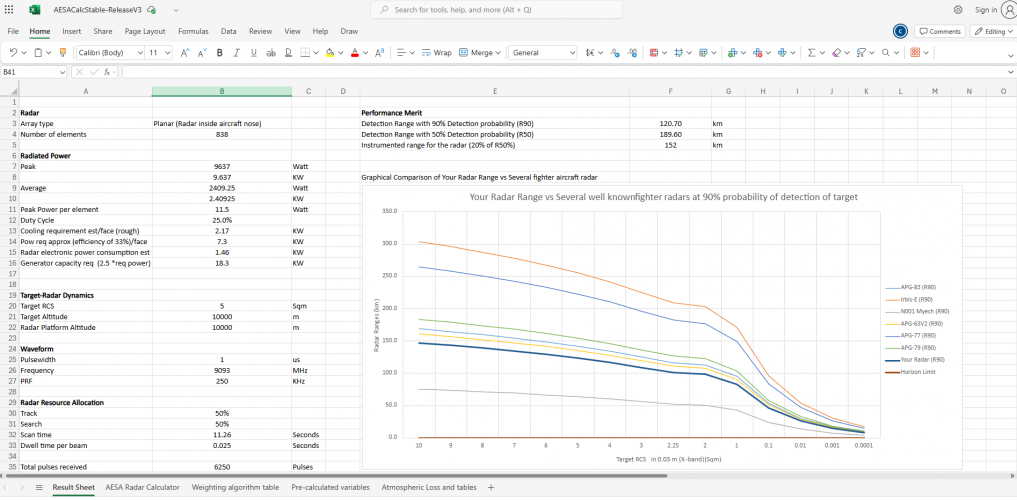
In fact, an AESA flew on Rafale in May 2003. According to Ramstein, a migration to AESA has been considered from the early days of the programme, and the RBE2 is designed so that an AESA front end can replace the current passive antenna and TWT. Power and cooling are adequate for the job. A programme called Demonstrateur de Radar a l'Antenne Active (DRAA) started in 2000, and the radar flew on a Falcon in late 2002 before flying in Rafale B301. "It was a difficult integration, taking two or three days," jokes Ramstein. The problem, however, is that DRAA relied on US-sourced high-power processing chips - which, after Korea and the Iraq war, no longer seemed like a good idea. A new AESA version of the RBE2, DRAAMA (DRAA modes avancées), using all-European technology, was launched in July 2004 and will be ready in 2007-08. "We have a firm commitment to AESA, which allows us to propose it for export," Ramstein says.
However, Dassault and Thales are not proposing to make the AESA the all-encompassing RF Cuisinart that Boeing (for example) envisages for the Super Hornet, with features such as passive detection, multi-beam operation and jamming. Nor does the team intend to exploit the AESA's wide bandwidth, which would mean a new radome. (This suggests that the current radome is a bandpass design, transparent at the RBE2 frequency but stealthily reflective at any other.) Rather, the approach is to minimise cost and risk by keeping the same modes as the RBE2, while harvesting what are seen as the most valuable advantages of the AESA. These include a 50 per cent-plus increase in detection range - a better match for Meteor - much better performance at the edges of the elevation and bearing envelope, better reliability through the elimination of single-point failures and lower through-life costs. With only 120 aircraft planned by 2012, the pace of the Rafale programme has been influenced more by budget considerations than by technology.
While the RBE2 AESA does not add any additional modes of operation compared to the Rafale's earlier passively electronic scanned array (PESA) RBE2, the performance in each mode is significantly improved, Thales stated. A key feature of AESAs, a lack of moving parts, has reduced the mean time between failure on the RBE2 AESA by a factor of 10 compared to the RBE2 PESA, according to Thales. The RBE2 AESA will also continue to "deliver full performance if a certain number of TR [Transmitter Receiver] modules have degraded", the spokesperson added, although they did not specify what this number was. While some early components, including TR modules, are understood to have been sourced from abroad, Thales has now "produced a complete supply chain [for the RBE2 AESA], with no critical component coming from abroad".

